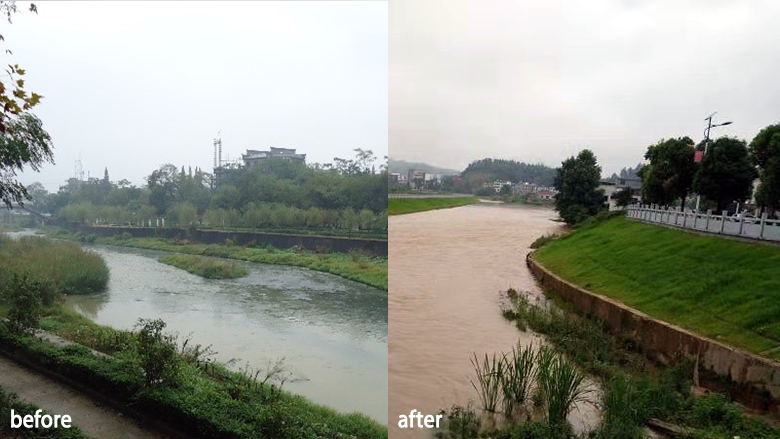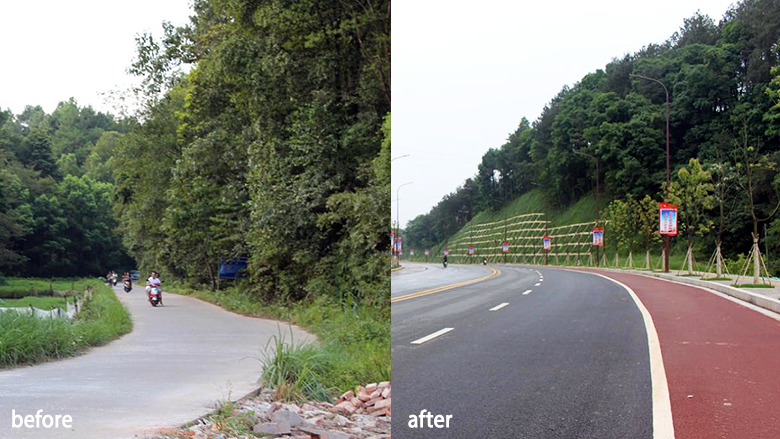Challenge
China had experienced rapid urbanization, with large cities attracting millions of people with their high concentrations of industries, services, and job opportunities. As a result, development in small towns has been constrained by gaps in infrastructure and public services and these small towns lack the agglomeration effects which often attract industries and investment.
Small town development was identified as a priority in China’s 12th Five Year Plan (2011-2015) to build a more diversified and coordinated urbanization process. The 12th Five Year Plan emphasized the essential role improving public services and residential environment in small town development could play and highlighted that priority should be given to areas with geographical advantages, abundant resources, and high environmental capacity for small town development.
Poyang Lake in Jiangxi Province is the largest freshwater lake in China, providing multiple ecosystem services such as biodiversity, water supply, flood control, water purification, and climate regulation. It is an important habitat for many critical aquatic ecosystems and birds, hosting the largest number of migratory birds in Asia.
The Poyang Lake Ecological and Economic Zone (PLEEZ) was established as a national pilot for small town development. The key challenges faced by the 11 counties selected for the project included bottlenecks in transportation, low levels of flood protection, and water pollution from untreated domestic wastewater.
Approach
The Jiangxi Poyang Lake Basin Ecological Economic Zone Small Town Development Project leveraged the World Bank’s global expertise in the transport, water, and urban sectors, as well as experience from similar projects in China.
With an integrated and innovative design, the project combined essential ‘hard’ infrastructure investment in transport, flood control, and water supply with the following ‘soft’ activities:
- providing technical assistance to develop plans for transport and flood management capable of guiding long-term infrastructure investments;
- establishing a ‘smart transport’ management system with disruptive technologies and decision support tools to demonstrate an innovative and efficient way to maximize benefits of an infrastructure service system at the county level; and
- applying nature-based solutions - such as constructed wetlands - for more sustainable wastewater management and developing a flood forecasting and early warning system to enhance the resilience of towns.
These ‘soft’ activities provided a road map to guide short- and long-term sector development planning and enabled the piloting of innovative tools to enhance public services.
Project counties also benefited from the World Bank’s experience in capacity building through technical and management training for local officials and staff.
Results
The project was implemented from 2013-2019 and achieved the following results:
- 565,850 people now have access to newly built or rehabilitated roads, which saves an average of 160 minutes per trip.
- Improved transport services facilitated the development of new schools and hospitals, increased the transportation of agricultural products, and helped link tourists to destinations, increasing local tourism revenue - all of which contributed to poverty reduction. For example, thanks to improved transport conditions, a new kindergarten and a new primary school were created in Yifeng County, vegetable and fruit planting bases had emerged along the new road in Hengfeng County. The newly constructed and rehabilitated roads facilitated local tourism by connecting the “beautiful countryside” tourist spots. In 2017, Longtoushan, a small town known for its natural beauty, attracted more than 50,000 tourists, with local tourism revenue increased by 75 percent. In addition, 99,880 people and 17,680 square kilometers of land are now protected from flooding, with increased flood protection levels and reduced losses in urban areas.
- The Chemical Oxygen Demand (COD, a measure of water and wastewater quality) entering Poyang Lake was reduced by 110.25 tons a year, while annual wastewater flowing into the Lake from the Mianjiang River was reduced by about 18.67 million cubic meters, improving the water quality in the Poyang Lake.
- The project contributed to the improvement of public health in Jiujiang county by eliminating schistosomiasis in the beneficiary area.
- A total of 2,617 project officials and staff at the provincial and county levels participated in 41 domestic and international trainings, workshops, and study tours, where they learned good practices and lessons in different fields. The ability to develop transport and flood management plans at county level was enhanced through hands-on training provided by the Bank team.
- An endowment insurance mechanism was established to secure the livelihoods of those farmers who lost their land due to project construction in Jiujiang county - a good practice which was replicated in other participating counties.


